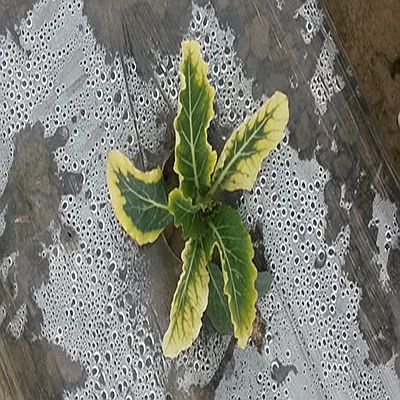- Home
- News
- Clomazone is an organic compound, which is an organic heterocyclic selective pre seedling herbicide
Clomazone is an organic compound, which is an organic heterocyclic selective pre seedling herbicide
Clomazone is an organic compound and a selective pre seedling herbicide of organic heterocyclic ring. It is suitable for controlling annual gramineous weeds and broad-leaved weeds in soybean, peanut, corn and other crop fields. Clomazone is mainly used to control annual gramineous weeds and broad-leaved weeds. It can be used as pre bud herbicide and post bud herbicide. It belongs to photosynthesis inhibitor. The photosynthesis of weeds was inhibited mainly by the following ways: ① inhibiting the formation of chloroplasts and the integrity of developmental structure; ② Inhibit the light reaction of light energy into chemical energy; ③ Inhibit the biosynthesis of photosynthetic products. The use of clomazone before seedling can be absorbed by miscellaneous grass roots and buds, and the water can be transmitted upward to all parts of the plant with transpiration; After the drug is absorbed, it can inhibit the synthesis of diterpene (isoprene) compounds in sensitive plants, hinder the biosynthesis of carotene and chlorophyll, cause leaf chlorosis and albinism, and kill weeds in a short time; Even if the seeds that absorb the medicine can sprout and emerge, they will die in a short time because they have no pigment. After use, it can be absorbed by the stems and leaves of weeds with poor conductivity, inhibit the synthesis of chlorophyll and carotene of sensitive plants, turn white and kill weeds. The biological activity of clomazone in soil can last for more than 6 months, indicating that the pesticide has a long residual effect period. Therefore, wheat, barley, oats, rye, millet and other crops should not be planted in autumn (i.e. 4 ~ 5 months after application) or spring (i.e. 6 ~ 10 months after application) of clomazone. Rice, corn, cotton, peanut, sunflower and other crops can be planted in the spring of the next year after the application of clomazone. Clomazone is selective to crops such as soybean, sugarcane, potato, peanut and tobacco. After being absorbed by crops, clomazone is transformed into a non-toxic degradation product through special metabolism. Clomazone has high vapor pressure. After application, it will volatilize from the soil surface and endanger other non target plants. If used improperly, clomazone can damage crops 1.6 km away through volatilization, such as grapes, tomatoes, peppers, etc.
Broad herbicidal spectrum and high activity. Clomazone can be used in soybean, rice, rape, cotton, cassava, sugarcane and tobacco fields to control annual gramineous weeds and broad-leaved weeds such as barnyardgrass, Dogtail grass, horse Tang, beef tendon grass, purslane, quinoa, dayflower, Solanum nigrum, Xanthium sibiricum and ragweed. It also has a strong inhibitory effect on stickleback, thistle, endive and so on. At present, it is considered that clomazone is one of the best drugs to prevent and eliminate the “three vegetables” (orchid, endive and thorn).
Long duration. Generally, one-time medication can maintain the whole growth period of crops, and can also play a good role in drought and low temperature.
The medication time is flexible. It can be used for pre bud use, pre planting sealing treatment, and post bud stem and leaf treatment.
Low toxicity. It is safe for crops, human, livestock and aquatic organisms and friendly to the environment.
Strong compatibility. There are many kinds of herbicides that can be mixed, so there are many compound products with convenient use and high efficacy.
The degradation of clomazone is mainly microbial degradation. The harm of clomazone is related to soil properties and climate; The physical and chemical properties, temperature, humidity and pH value of soil are important factors affecting the degradation of clomazone. The degradation is slow in acidic soil. Therefore, the possibility of drug damage caused by next crops is great.

